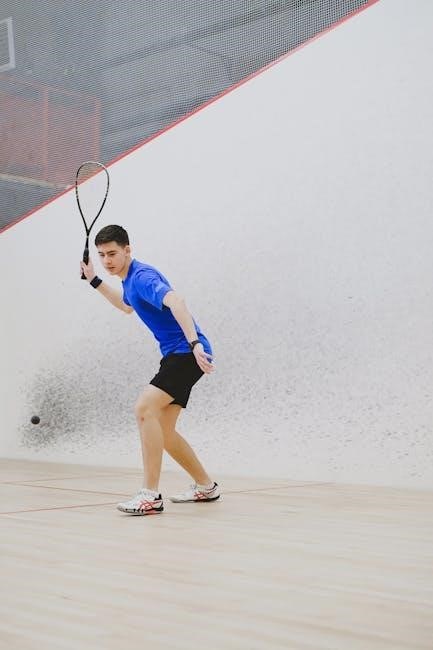The Moro reflex integration exercises are essential for supporting neurological development in children, helping to improve emotional regulation, motor skills, and overall coordination through simple, targeted movements.
What is the Moro Reflex?
The Moro reflex, also known as the startle reflex, is one of the earliest primitive reflexes present in infants. It is typically observed in response to a sudden loss of support or a loud noise, causing the infant to spread their arms and legs before bringing them back toward the midline of their body. This reflex is a natural, instinctive response that plays a critical role in early development, helping infants feel secure and balanced in their environment. The Moro reflex usually integrates by around 4 to 6 months of age, as higher-level motor skills develop. When this reflex persists beyond infancy, it can impact coordination, emotional regulation, and sensory processing, making integration exercises essential for supporting neurological and motor development.
Importance of Moro Reflex Integration
Integrating the Moro reflex is crucial for healthy neurological and motor development. When this reflex remains active beyond infancy, it can interfere with emotional regulation, sensory processing, and motor skills. Retained Moro reflexes are often linked to challenges such as gravitational insecurity, sensory defensiveness, and poor coordination. Integration exercises help the brain mature beyond this primitive response, reducing overreactions to stimuli and improving overall balance and stability. By addressing the Moro reflex, individuals can experience better emotional resilience, enhanced motor control, and improved focus, which are essential for academic and daily activities. Proper integration also supports the development of higher-level motor skills, such as handwriting and sports performance, making it a foundational step in addressing developmental delays or sensory processing difficulties.
Benefits of Moro Reflex Integration Exercises
Moro reflex integration exercises offer numerous benefits, particularly for children with developmental challenges. These exercises enhance emotional regulation by reducing overreactions to stimuli, improve motor skills through better coordination and balance, and boost sensory processing abilities. They also address gravitational insecurity and sensory defensiveness, common issues linked to a retained Moro reflex. By promoting neurological maturation, these exercises foster improved focus, which is crucial for academic success. Additionally, they lay the groundwork for advanced motor skills like handwriting and sports performance. Overall, integrating the Moro reflex supports a child’s ability to function more effectively in daily life, leading to greater confidence and independence. These exercises are simple yet impactful, making them a valuable tool for parents and therapists aiming to support developmental progress.

Understanding the Moro Reflex
The Moro reflex, present from birth, is a primitive reflex crucial for infant development, impacting sensory processing and emotional regulation. Its integration is key to improving motor skills and coordination in children.
Definition and Overview
The Moro reflex, also known as the startle reflex, is a primitive reflex present in infants from birth. It is characterized by a distinct sequence of movements in response to a sudden loss of support or a startling stimulus. When triggered, the infant will spreading their arms and legs, arching their back, and then bringing their arms back toward their body. This reflex is a natural part of early development, typically integrating by 6 months of age. However, in some cases, the Moro reflex may persist beyond infancy, potentially impacting sensory processing, motor skills, and emotional regulation. Understanding and addressing retained reflexes is crucial for promoting neurological balance and overall development. The integration of the Moro reflex through targeted exercises can help alleviate related challenges, supporting improved coordination, balance, and focus in both children and adults.
How the Moro Reflex Impacts Development
The Moro reflex plays a significant role in early development, but when retained, it can affect sensory processing, motor skills, and emotional regulation. A retained Moro reflex may lead to challenges such as sensory defensiveness, difficulty with balance, and gravitational insecurity. It can also impact a child’s ability to focus and engage in learning activities due to heightened startle responses. Motor skills may be compromised, as the reflex can interfere with coordination and bilateral integration. Emotional regulation is also influenced, as individuals with a retained Moro reflex may exhibit increased anxiety or overreact to stimuli. Addressing the Moro reflex through integration exercises is crucial for promoting neurological maturation and supporting overall developmental progress. By mitigating its effects, children can achieve better motor control, emotional stability, and improved academic performance.
Signs of Retained Moro Reflex
Recognizing the signs of a retained Moro reflex is crucial for understanding its impact on development. Common indicators include heightened sensory sensitivity, such as overreacting to loud noises or bright lights, and difficulty with emotional regulation, leading to increased anxiety or stress. Children may exhibit gravitational insecurity, showing fear of movement or upside-down positions. Poor ocular-postural skills, such as difficulty focusing during tasks, can also be a sign. Additionally, retained Moro reflex may manifest as challenges with balance, coordination, and bilateral integration, making activities like climbing or riding a bike more difficult. In some cases, individuals may display a persistent startle response or an exaggerated reaction to unexpected stimuli. These signs highlight the need for targeted integration exercises to help mitigate the reflex’s effects and support overall developmental progress.

Science Behind Moro Reflex Integration
The Moro reflex integration involves neural mechanisms linked to brainstem activity, affecting sensory processing and motor responses. Exercises target these pathways to enhance developmental outcomes and sensory regulation.
Neural Mechanisms of the Moro Reflex
The Moro reflex is mediated by the brainstem and involves vestibular and proprioceptive pathways. It is triggered by a sudden loss of support or movement, activating a sequence of arm movements. This reflex is closely linked to sensory processing and motor control. Retained Moro reflexes can disrupt neural development, affecting emotional regulation and coordination. Integration exercises target these neural pathways, enhancing sensory integration and motor responses. The brainstem plays a central role in modulating the reflex, and its integration is crucial for mature neurological function. Understanding these mechanisms helps in designing effective exercises to support developmental progress and reduce reflex-related challenges. Proper integration enhances overall neurological balance and functional abilities. The vestibular system’s role in this process is key to improving sensory processing and motor skills. By addressing these neural mechanisms, exercises promote long-term developmental benefits. This knowledge is essential for creating effective Moro reflex integration strategies.
The Role of Primitive Reflexes in Development
Primitive reflexes, including the Moro reflex, play a vital role in early development, enabling infants to adapt to their environment. These reflexes are automatic responses that lay the foundation for voluntary movements and sensory processing. As a child grows, these reflexes typically integrate into more complex motor patterns. However, if primitive reflexes remain retained, they can interfere with developmental milestones, such as coordination, balance, and emotional regulation. The Moro reflex, in particular, influences sensory processing and neurological balance. Integration exercises are designed to help the brain mature beyond these primitive responses, promoting smoother transitions to higher-level skills. Addressing these reflexes is essential for supporting overall developmental progress and reducing challenges associated with retained primitive reflexes. By understanding their role, parents and therapists can implement targeted strategies to foster healthy neurological and motor development in children. This foundation is critical for long-term cognitive, emotional, and physical well-being. Effective integration exercises can significantly enhance a child’s ability to thrive.
Link Between Moro Reflex and Sensory Processing
The Moro reflex is deeply connected to sensory processing, as it affects how individuals perceive and respond to environmental stimuli. A retained Moro reflex can lead to sensory defensiveness and gravitational insecurity, making it challenging for children to regulate their responses to sounds, textures, or movements. This reflex impacts the integration of sensory information, often resulting in overreaction or avoidance behaviors. Integration exercises specifically target the Moro reflex to improve sensory tolerance and emotional regulation. By addressing this reflex, children can better process sensory input, reducing anxiety and enhancing their ability to engage in daily activities. These exercises also promote neurological balance, which is essential for healthy sensory processing and overall developmental progress. Understanding this link is crucial for designing effective strategies to support children with sensory challenges.

Moro Reflex Integration Exercises
Moro reflex integration exercises, such as the Moro Bridge and Starfish, are simple yet effective movements designed to improve motor skills, sensory integration, and overall neurological balance in children and adults.
Overview of Effective Exercises
Moro reflex integration exercises are designed to help individuals, especially children, overcome retained primitive reflexes. These exercises, such as the Moro Bridge and Starfish, target motor skills, sensory integration, and bilateral coordination. The Moro Bridge involves lying on the back with knees bent, pressing palms together, and slowly lifting the arms while maintaining core engagement. The Starfish exercise requires lying on the stomach and extending arms and legs outward, holding the position for a few seconds. Passive Supine Rocking involves gentle rocking movements on a therapy ball to stimulate balance and relaxation. Suspended Equipment Transfers focus on transferring objects while in motion, enhancing spatial awareness. Duck and Pigeon Walk with Stick combines animal movements with coordination challenges. These exercises are simple, repetitive, and can be adapted to different ages and abilities, making them accessible for home or therapeutic settings. Regular practice helps improve posture, balance, and emotional regulation, supporting overall neurological development.
The Moro Bridge Exercise
The Moro Bridge exercise is a fundamental movement designed to integrate the Moro reflex by strengthening motor skills and improving neurological balance. To perform this exercise, lie on your back with knees bent and feet flat on the floor, engaging the core for stability. Palms should be pressed together at the chest, and arms are slowly lifted while maintaining the bent-knee position. This motion mimics the Moro reflex response, helping the brain gradually release primitive reflex patterns. Regular practice of the Moro Bridge supports emotional regulation, posture, and coordination. It is often recommended for children with developmental delays but can benefit individuals of all ages. The exercise is simple, effective, and can be incorporated into daily routines for consistent progress in reflex integration.
The Starfish Exercise
The Starfish Exercise is a dynamic movement designed to aid in Moro reflex integration by enhancing motor coordination and balance. Begin by lying on your back, extending your arms and legs into a starfish position. Slowly bring one knee toward your chest while extending the opposite arm overhead, then switch sides in a controlled, flowing motion. This exercise mimics the natural reflex response, helping the brain release primitive reflex patterns. Regular practice supports improved posture, emotional stability, and motor skills. The Starfish Exercise is particularly effective for children with developmental challenges but can also benefit adults seeking neurological balance. Consistency is key, with daily practice recommended for optimal results. This simple yet impactful movement is a cornerstone of Moro reflex integration programs, offering noticeable improvements in coordination and sensory processing over time.
Passive Supine Rocking
Passive Supine Rocking is a gentle, therapeutic exercise designed to support Moro reflex integration by promoting relaxation and reducing gravitational insecurity. To perform this exercise, lie on your back with your knees bent and feet flat on the floor or a therapy ball. Slowly rock your body from side to side, allowing your arms and legs to move freely. This rocking motion mimics the soothing sensations of being in the womb, helping to calm the nervous system and release tension. Regular practice can improve emotional regulation, reduce sensory sensitivities, and enhance overall motor control; Passive Supine Rocking is particularly beneficial for individuals with retained Moro reflexes, as it encourages the brain to mature beyond primitive reflex patterns. Consistency is key, with daily sessions of 5–10 minutes recommended for optimal results. This exercise is simple, effective, and can be adapted to suit various ages and abilities.
Suspended Equipment Transfers
Suspended Equipment Transfers are a dynamic and engaging Moro reflex integration exercise that involves the use of therapy swings, hammocks, or other suspended equipment. The individual is gently rocked or transferred between different points, mimicking the natural movement of being cradled. This activity helps regulate the nervous system, reducing gravitational insecurity and sensory defensiveness. It also enhances spatial awareness and bilateral coordination. To perform this exercise, start with slow, controlled movements, gradually increasing intensity as comfort allows. The goal is to create a sense of safety and balance, encouraging the brain to integrate the Moro reflex. Consistency is key, with 2–3 short sessions per week recommended. Suspended Equipment Transfers are particularly effective for children and adults with sensory processing challenges, offering a fun and therapeutic way to support neurological development. Always ensure proper supervision and use of safety equipment during practice.
Duck and Pigeon Walk with Stick
The Duck and Pigeon Walk with Stick is an engaging Moro reflex integration exercise designed to enhance balance, coordination, and sensory processing. This activity involves walking in two distinct patterns: the “duck walk” and the “pigeon walk,” while using a stick for support and stability. The duck walk requires bending the knees slightly and waddling, mimicking a duck’s gait, which challenges balance and coordination. The pigeon walk involves taking small, quick steps with toes pointed inward, promoting precision and control. The stick acts as a sensory anchor, helping the individual maintain focus and reduce gravitational insecurity. This exercise also encourages cross-body movements, fostering bilateral integration and improving overall motor skills. Regular practice of the Duck and Pigeon Walk with Stick can significantly aid in integrating the Moro reflex, leading to better emotional regulation and physical stability. It is recommended to perform this exercise 3–4 times weekly for optimal results.

Creating a Moro Reflex Integration PDF Guide
Design a clear, visually appealing guide with step-by-step instructions, images, and tips for parents and therapists to effectively integrate the Moro reflex through exercises and activities.
Designing the PDF Layout
When creating a Moro reflex integration PDF guide, prioritize clarity and accessibility. Use a clean, professional layout with clear headings, subheaders, and bullet points. Incorporate high-quality images and diagrams to illustrate exercises like the Moro Bridge or Starfish position. Ensure text is concise and easy to read, using a standard font like Arial or Calibri. Leave ample whitespace to avoid clutter and enhance readability. Consider adding visual aids such as infographics or step-by-step guides for complex exercises. Include page numbers and a table of contents for easy navigation. Use consistent styling throughout, such as bold headers and color-coded sections, to maintain a professional appearance. Finally, ensure the PDF is mobile-friendly for accessibility on various devices, and include interactive elements like bookmarks for quick reference.
Including Visual Aids and Instructions
Including visual aids and clear instructions in a Moro reflex integration PDF guide is crucial for ensuring exercises are performed correctly. Use diagrams, step-by-step photos, and infographics to illustrate movements like the Starfish or Duck and Pigeon Walk. Provide detailed descriptions of each exercise, emphasizing proper form and alignment. Include tips for parents and therapists, such as modifying exercises for different age groups or abilities. Add visual cues, like arrows or highlighted body positions, to clarify complex movements. Incorporate checklists or progress trackers to help users monitor their practice. Ensure instructions are concise yet comprehensive, avoiding overly technical language. Consider adding QR codes linking to video demonstrations for better understanding. By combining visuals with clear, actionable steps, the guide becomes a practical, user-friendly resource for integrating the Moro reflex effectively.
Best Practices for Sharing the PDF
When sharing a Moro reflex integration exercises PDF, ensure it is easily accessible and user-friendly. Distribute it via email newsletters, social media, or professional networks to reach parents and therapists. Include a clear title and cover page for professional presentation. Optimize the PDF for mobile devices to accommodate on-the-go access. Add bookmarks or a table of contents for easy navigation. Protect the document with copyright information to prevent unauthorized use. Encourage feedback by including a contact page or survey link. Use password protection if necessary and provide instructions for printing or digital use. Track usage with analytics tools to monitor engagement. Consider offering translations for diverse audiences. Ensure the PDF is compatible with assistive technologies for accessibility. By following these best practices, the guide becomes a valuable, widely accessible resource for Moro reflex integration.

Case Studies and Success Stories
Real-life applications of Moro reflex integration exercises have shown significant improvements in children’s developmental milestones. Parents and therapists report enhanced motor skills and emotional regulation, highlighting the exercises’ effectiveness;
Real-Life Applications of Moro Reflex Integration
Moro reflex integration exercises have been widely applied in therapeutic and educational settings to support children with developmental challenges. Many parents and therapists have reported significant improvements in children’s focus, emotional stability, and motor coordination. For instance, the Starfish exercise has been particularly effective in enhancing bilateral coordination, while the Duck and Pigeon Walk with Stick exercise has helped improve balance and spatial awareness. Schools and therapy centers often incorporate these exercises into daily routines, observing positive changes in academic performance and social interactions. Success stories highlight how consistent practice of Moro reflex integration exercises can lead to long-term developmental benefits, making them a valuable tool for supporting children’s overall growth and well-being.
Success Stories from Parents and Therapists
Parents and therapists have shared numerous success stories highlighting the positive impact of Moro reflex integration exercises on children’s development. Many report significant improvements in focus, coordination, and emotional regulation after consistent practice. For example, one parent noted that after performing the Moro Bridge exercise daily, their child showed enhanced balance and reduced gravitational insecurity. Therapists have also observed improved sensory processing and motor skills in children who regularly practice exercises like the Starfish and Suspended Equipment Transfers. These testimonials demonstrate how integrating the Moro reflex can lead to long-term developmental benefits, empowering children to thrive academically and socially. The shared experiences underscore the effectiveness of these exercises as a practical tool for supporting neurological and emotional growth in children with developmental challenges.
Moro reflex integration exercises offer a powerful tool for enhancing neurological development, emotional regulation, and motor skills in children. Downloadable PDF guides provide comprehensive instructions and visual aids, making it easy for parents and therapists to implement these exercises effectively. By incorporating activities like the Moro Bridge and Starfish exercises, individuals can support long-term developmental growth and improve overall well-being. Further resources and success stories are available online, offering additional insights and strategies for successful integration.
